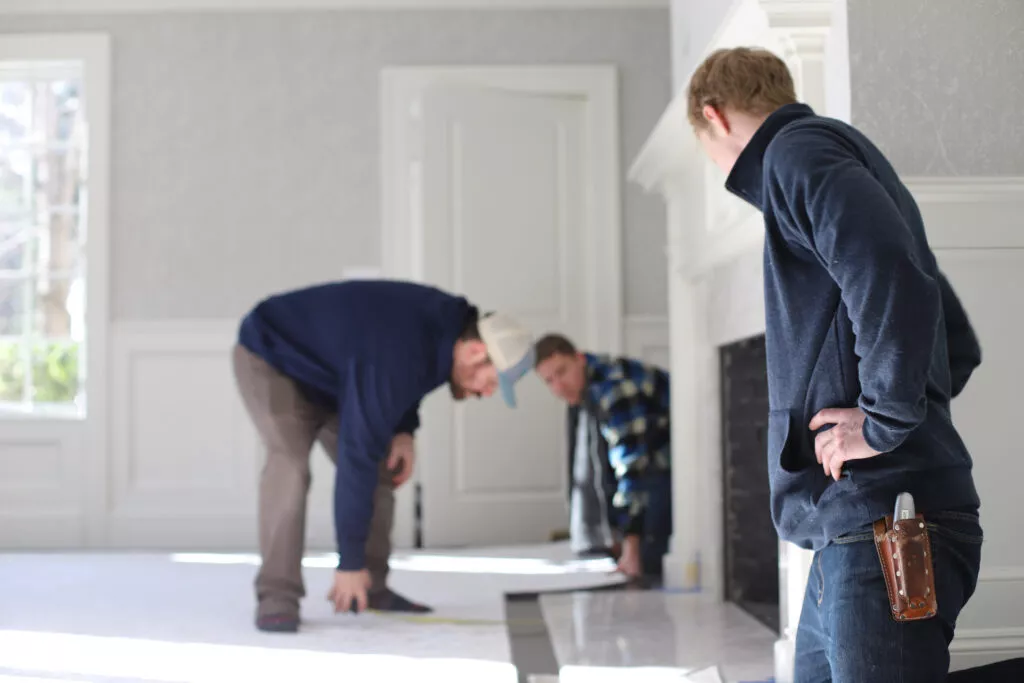A lot of customers ask us about the presence of VOCs (Volatile Organic Compounds) in carpeting. And it’s a very fair question. Nobody wants to invite anything volatile into their home, especially in a space that invites everyone to lay directly on it. This is one of the many reasons why we recommend natural materials like wool, sisal, jute, and tencel. Because these are natural materials, there is very little concern about VOCs like petroleum or asbestos. Additionally, this is also the reason why we never recommend moving into a home with existing carpeting. There’s just no way of telling what material it is or how it was maintained by the previous owners. The only way to ensure a clean living environment is by replacing your old carpet with something new and natural like wool.
Here’s What Homeowners Need to Know About Asbestos In Carpet:
Winter is the perfect time to install and repair your carpet, but if you live in an older home, this project can expose you to a dangerous material that you may not even know is there — asbestos. Here is everything you need to know about the presence of asbestos in your carpet, as well as how to keep you and your family safe.

What is Asbestos?
Asbestos is a naturally occurring mineral that was a popular building material around the world due to its durability, strength, and resistance to heat and sound. However, it was soon discovered that this versatile substance caused severe health effects over time. Breathing in asbestos fibers can cause a number of diseases, including asbestosis, lung cancer, and mesothelioma. Symptoms of being exposed to asbestos often don’t emerge until decades later, so it’s critical to reduce exposure to prevent developing cancer.
Although there are laws that prohibit its use in new construction, many older homes still contain asbestos, putting millions of people at risk of developing life-threatening diseases if they aren’t aware that they’re in the presence of asbestos.
Where Is Asbestos Found In Carpet?
In the 60s and 70s asbestos use was at an all-time high. Despite manufacturers starting to know of the health risks, millions of homes were built using asbestos-containing materials (ACMs) to prevent the spread of fires, control noise, and insulate the home. To this day, over half of the houses in the U.S. still contain asbestos in various areas.

While carpets were not directly produced with asbestos, carpets were made using recycled hessian bags. Hessian bags were bags that were constructed with wool, jute, and goat hair, and were used to transport asbestos from mines, as well as other materials. These bags were recycled to create carpet underlays. It is likely that the shredding process used to prepare the bags got rid of most of the asbestos; however, there is still a risk of contamination that homeowners should be aware of.
Carpet glues may also be a culprit of asbestos. Asbestos glues were used to securely seal carpets to the floor and prevent curling and lifting. You can sometimes identify asbestos glue by its color — which can be yellow, tan, or brown — but this is not a foolproof identifier. Instead of guessing, it is a safer bet to have any unknown glues tested by a reputable company. Luckily the asbestos used in glues and adhesives is non-friable, which means that there is a low risk that it will become airborne if it is left undisturbed.
Additionally, the floor underneath the carpet may be contaminated with asbestos as well. Asbestos floor tiles were heavily used in homes during this time, and most of them were glued using an asbestos adhesive. If your home has vinyl or asphalt floor tiles that were put in during this time, they could have been constructed with up to 70% asbestos.
Although asbestos is dangerous, these ACMs do not pose an immediate threat to your health as long as the asbestos stays tightly contained in the material. You can safely vacuum and clean these carpets as normal without worry. However, asbestos fibers can be released into the air if your carpet or the floor underneath it begins to tear, fray, or if you choose to remove the carpet.
How to Remove Asbestos From Carpet
It is in your best interest to consult a professional whenever you want to work on your carpet, especially if you suspect asbestos may be present. Handling ACMs yourself can significantly increase the chances of asbestos fibers becoming airborne and contaminating your home. It is difficult to identify when you’re dealing with the mineral, so you should not assume that your carpet is asbestos-free just by looking at it.
If your carpet was installed before 1980, you should have your carpets inspected by a licensed asbestos professional before you start any renovations or repairs. Doing these steps will help ensure that your risk of developing an asbestos-related disease is low.



